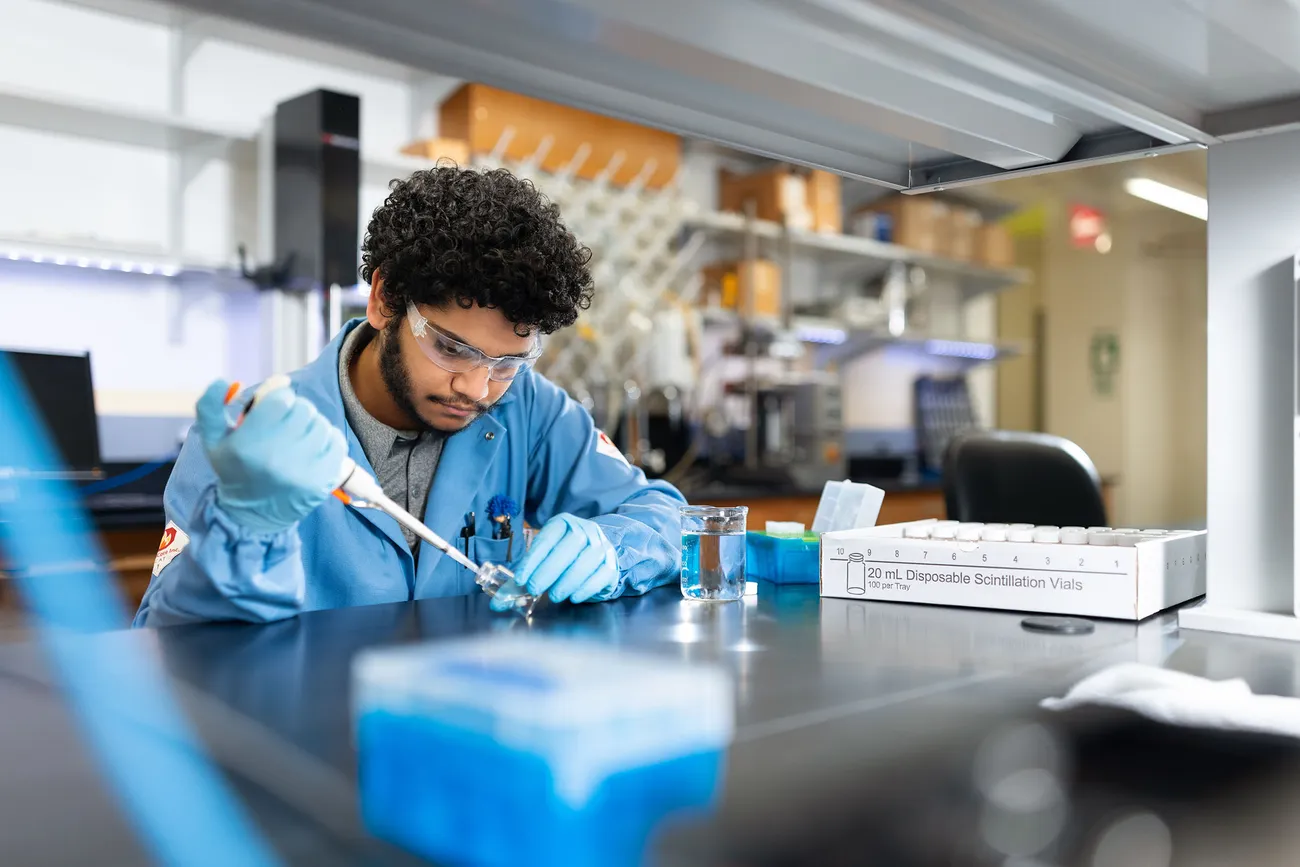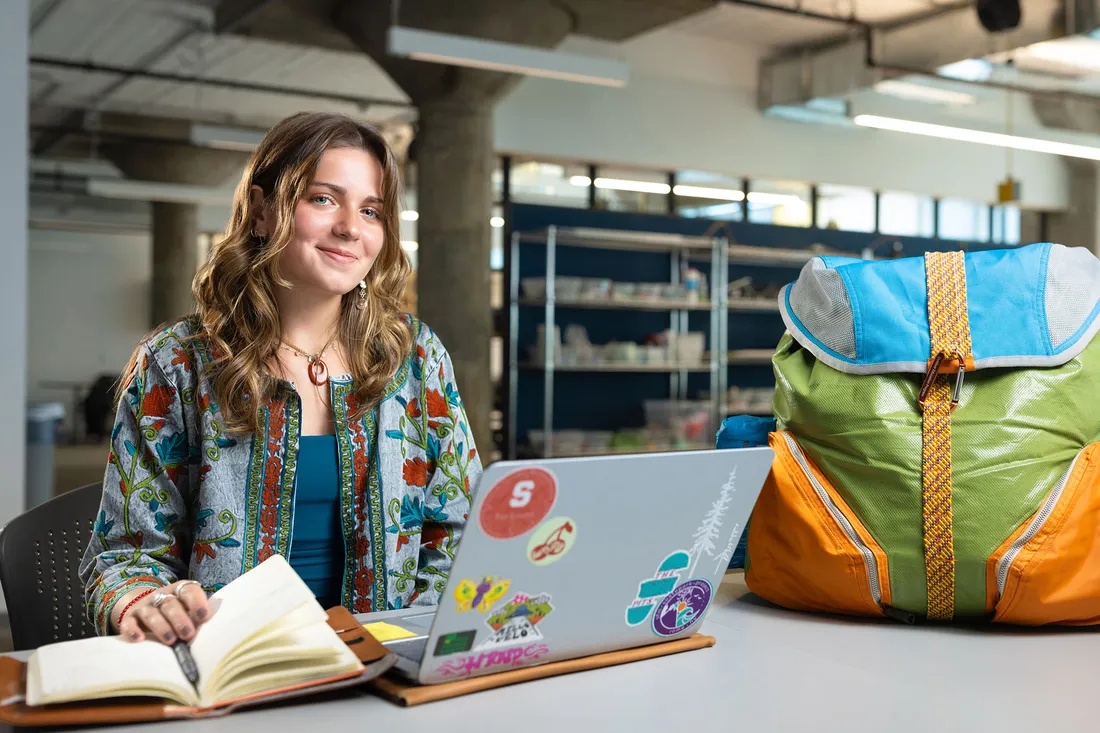The first thing Leo Saldanha ’26 wants to do after graduation is go to Europe.
“I’m already looking at master’s programs there,” says the aspiring bioengineer in Syracuse University’s College of Engineering and Computer Science (ECS). “I ultimately want to earn a Ph.D., but I might get some industry experience first.”
Either way, Saldanha is ready thanks, in part, to support from the Syracuse Office of Undergraduate Research and Creative Engagement (SOURCE). Last fall, he received a SOURCE Bridge Award to study biomaterials in the lab of Mary Beth Monroe, an associate professor of biomedical and chemical engineering.
The experience included a trip to Boston for his first major conference—a regional symposium of the Society of Biomaterials. There, he engaged with some of the brightest minds in academia, healthcare, government and business.
“It was incredible,” recalls the biomedical engineering major. “I started out by giving a One-Minute Poster Talk. I literally had 60 seconds to explain my research in detail.”
Afterward, Saldanha participated in an hourlong poster session, discussing his findings and fielding questions from peers and professionals alike.
“Both presentations required concise delivery, but the shorter one had to be airtight,” he says. “Communication is an important skill for researchers.”
The trip prepared Saldanha for the SOURCE Fall Expo, which took place three months later at Syracuse. In both instances, Saldanha elaborated on his work with synthetic materials that are designed to repair damaged human tissues and organs.
Such interventions are of immense value to first responders, he explains, because of their portability, affordability and effectiveness. “I’m on the cutting edge of a cutting-edge industry.”
Trained by the Best
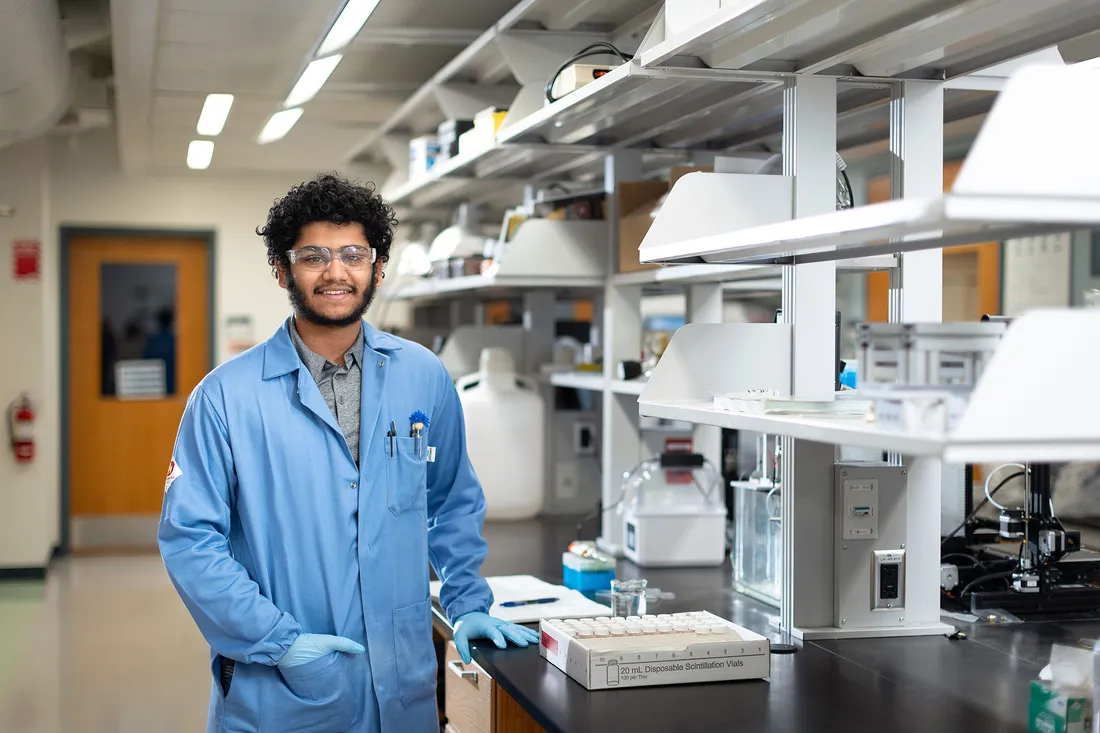
Leo Saldanha, a senior majoring in biomedical engineering, studies synthetic materials that repair damaged human tissues and organs.
Growing up in southern New Hampshire, Saldanha got bit by the STEM bug at an early age. Participation in a summer medical academy before his senior year of high school convinced him of engineering’s possibilities in service of biology and medicine.
“I was accepted to a couple of tech-heavy universities, but Syracuse won out,” Saldanha continues. “I was sold on our big, active campus and diverse student body.”
In addition to ECS’ newly renovated and expanded facilities, Saldanha was mesmerized by the college’s rigorous research culture. “I’m trained by the best,” he says, referring to Monroe—a pioneer in biomaterials design and development whose mentorship has left a lasting impact on him.
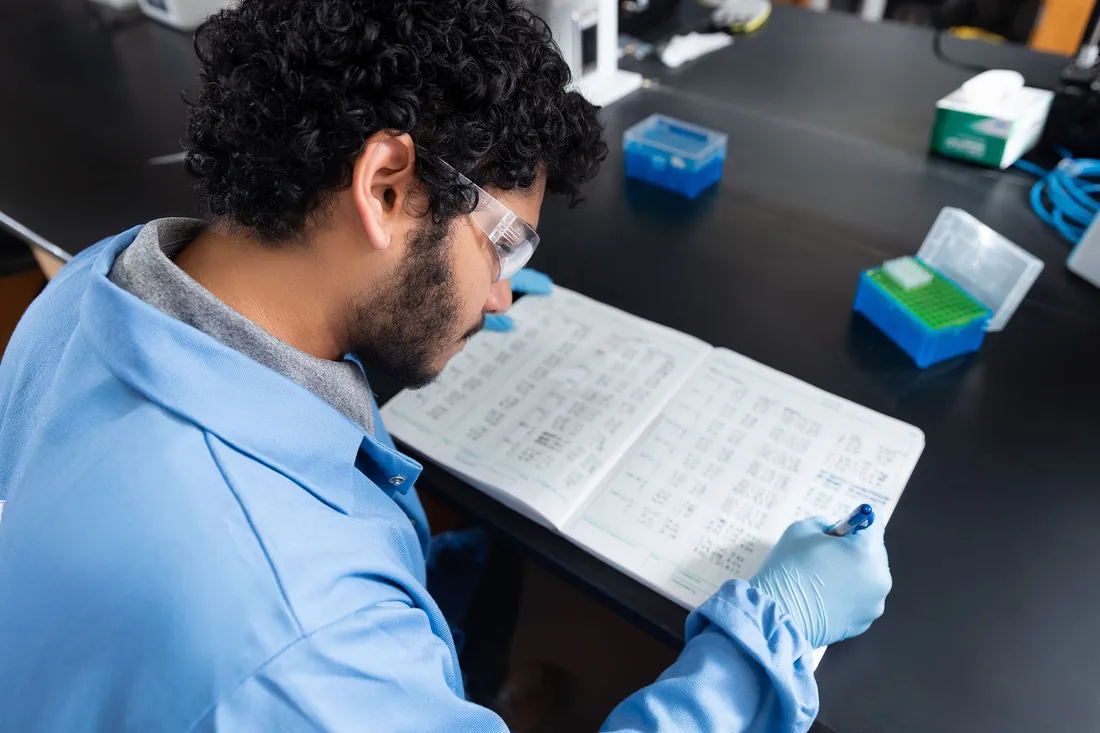
“Leo is a dedicated and enthusiastic researcher,” says Natalie Petryk ’21, G’22, G’25, who earned a Ph.D. in biomedical engineering. Thanks to a SOURCE Bridge Award, he worked alongside her in the lab of Associate Professor Mary Beth Monroe.
SOURCE enabled Saldanha to serve on Monroe’s research team, which included Natalie Petryk ’21, G’22, G’25, then a Ph.D. candidate in biomedical engineering. She describes him as a “dedicated and enthusiastic” researcher, “always eager to learn and develop skills in laboratory techniques and instrumentation.”
Concerned about the growing number of preventable battlefield deaths (an estimated 1.5 million per year due to uncontrolled bleeding), Petryk asked for Saldanha’s help with developing a nonsurgical wound dressing.
The dressing, he explains, is a response to the inefficacy of tourniquets and gauze, both considered the gold standard for treating traumatic wounds.
“They have a lot of limitations,” says Saldanha, noting that tourniquets restrict blood flow, damage skin tissue and can’t be used on injuries to the neck and torso, while gauze often triggers more bleeding. “Natalie was creating a hemostatic foam that could revolutionize the industry.”
Fast-Growing Dividends

“I want to earn a Ph.D. but might get industry experience first,” says Saldanha, who has co-authored articles for two peer-reviewed journals.
The foam in question is about the size of a Cheeto and is made from polyurethane, a polymer material found in insulation, bedding and furniture. The device is porous and absorbent as well as biocompatible and degradable.
“You simply insert the foam into a wound, where it reheats to body temperature and swells,” Saldanha says. “The expansion applies pressure to the wound walls, causing the blood to clot.”
One of his assignments was to observe how the foam responded to water and oxygen in the body.
Another was to make sure the foam completely broke down, or degraded, in 56 days—enough time to produce proteins that facilitate cell growth and skin tissue regeneration.
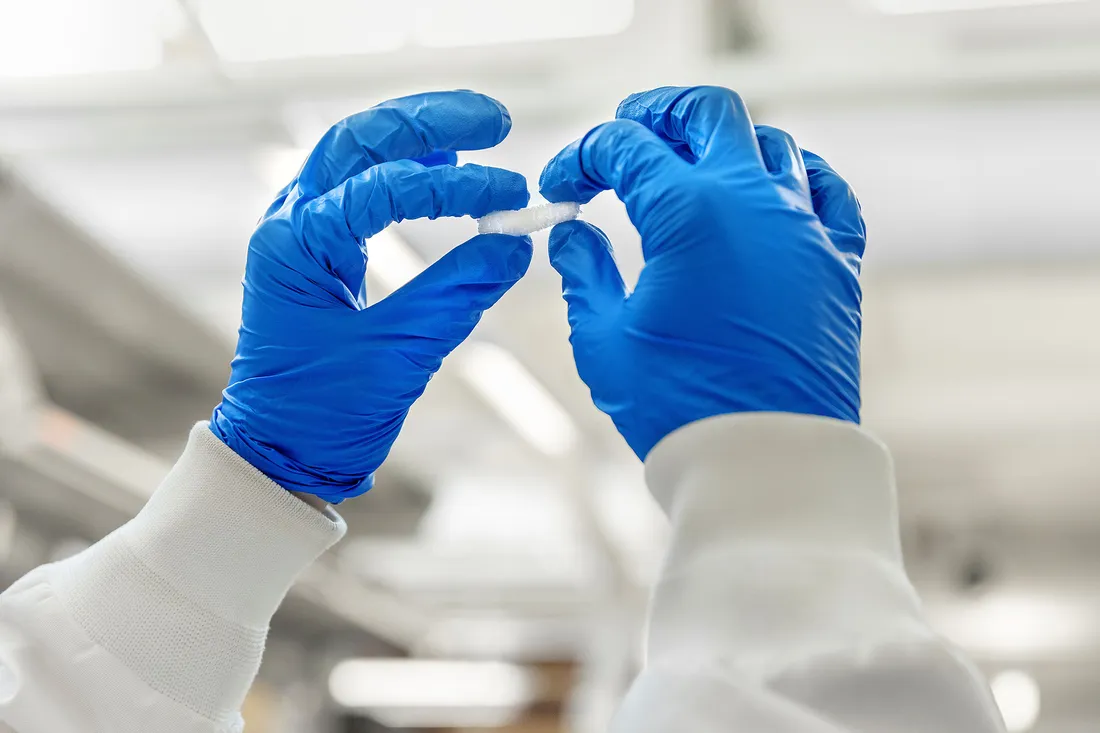
Saldanha is learning how to make medical devices, like nonsurgical foams for hemorrhage control.
Saldanha used techniques like Scanning Electron Microscopy to study the foam’s surface features as well as Fourier Transform Infrared Spectroscopy to track its elemental composition.
“The whole point is for the foam to degrade at the same rate that cells and tissue grow,” he adds.
Although the device is still in the early stages of commercialization, Saldanha has co-authored articles for the peer-reviewed journals Acta Biomaterialia and ACS Applied Materials & Interfaces. He also has worked with successful startups like Shape Memory Medical Inc.
Petryk sees a bright future for ECS’ star student. “Leo’s contributions to our work have been invaluable,” she says. “He’ll go far, wherever he lands.”

